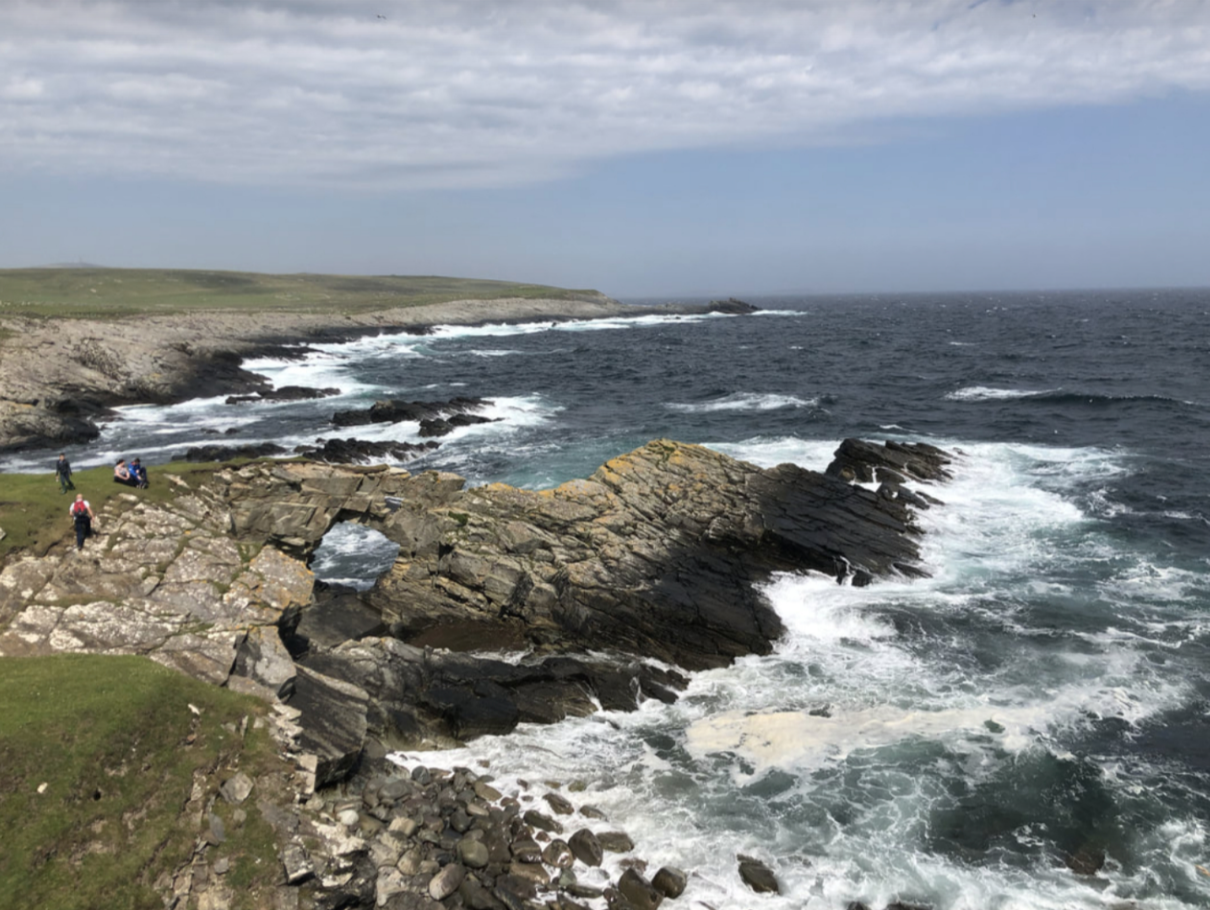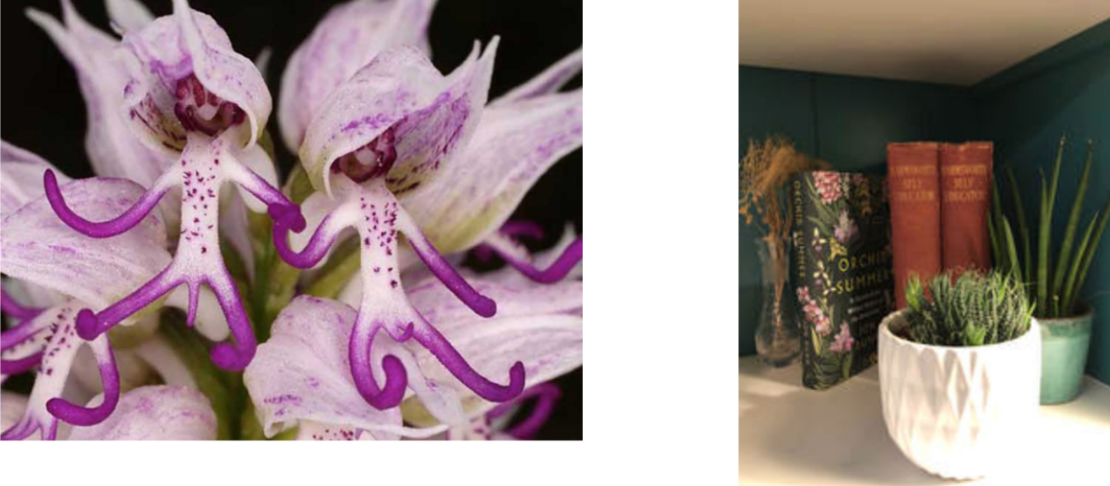A lowdown on the Shetland Nature Festival
As a self-confessed history lover, the Shetland Nature Festival is something which is a little out of my comfort zone but having got my hands on a programme I had a look through it to see which of the events would interest me, and/or the bairns who, as the summer holidays march on, begin to grind on the nerves of even the calmest and most patient of mothers (I tell myself assuringly).
The first thing that struck me was how varied the programme was and how many different things there were on offer. It really packed a punch, filled with events for even the most reticent of nature lovers, like myself. 'Our' Nature Festival began with a visit to the fish-beds at Shingly Geo, Dunrossness, and as we couldn't make the guided walk on Wednesday we decided to go it alone. Along the way we were treated to a spectacular show of seabirds and we passed the natural arch at the famous Red Pool (the sea was washing into it on the day so it lacked the deep, blood-red appearance, but was spectacular nonetheless).
Once we arrived at the geo it didn't take long before we found our first fossil. These siltstone beds are 390 million years old and were formed when several continents collided, leaving fish trapped in lakes, and once dead, they were fossilised in the silt deposits. It's fascinating to think that these fossils, which we were able to touch, have been around for that length of time and that they have travelled this far north, to our island archipelago from where they began life 390 million years ago, close to the equator. Is it any wonder Shetland enjoys Geopark status!?
After the fossil beds we had an hour or so to kill so we went to Sumburgh Head in the hope of spotting some puffins. Having done a number of tours over the season and seen plenty, I was pretty confident that there would be some, and for the second time this summer, dragging the bairns along, we didn't see any. The comical little seabirds appeared to have all Gone Fishing! Just our luck.
The bairns weren't really that bothered, being far more excited by the plastic Killer Whale which they were desperate to be photographed with so we went on up the hill to see Sally Huband's exhibition in the Stevenson Centre Cafe.
'Eggcases and other Beachcombed Treasures' displayed items, both natural and man-made which have been found on Shetland's beaches. It featured information about egg-cases (frequently found in Shetland) and the ways in which the Shark Trust are logging them for research purposes.It's very easy to get involved and you can find more information via www.sharktrust.org.
"The Great Eggcase Hunt aims to get as many people as possible hunting for eggcases that have either been washed ashore, or are found by divers and snorkelers underwater. In recent decades, several species of shark, skate and ray around the British coast have dramatically declined in numbers. The empty eggcases (or mermaid’s purses) are an easily accessible source of information on the whereabouts of potential nursery grounds and will provide the Trust with a better understanding of species abundance and distribution".
Rachel Laurenson was also on hand with information about the #2minutebeachclean and #plasticfree campaigns which have gained rapid momentum via social media sites such as Instagram over recent months and now involve a growing number of participants both locally and nationally who are assisting in cleaning up our beaches and shorelines.
Feeling like social butterflies, we then moved on to try our hand at Rockpooling at Sandsayre where, when the tide goes out the most fantastic rock pools are left behind which extend far out from the shore, marooning any unsuspecting sea-life in its path. A nightmare for navigation but a treasure-trove for the 'would be hunter-gatherer'; and armed with a few nets and buckets we began our quest, and the pools certainly didn't let us down. Finding shore crabs, edible crabs, hermit crabs, red seaweeds, brittlestars, sea urchins, whelks, limpets and anemones, the bairns went home tired and happy after their successful day at the Nature Festival.
At the end of the week we attended the Flowers and Pollinators day at the Crofthouse Museum, Boddam. I was working at the event, with my museum hat on and it proved very popular. My bairns made it down in the afternoon with granny which was an added bonus. The highlight (for me) was the moth traps which had been set the previous evening using a UV light to attract these nocturnal flyers.
There were an incredible 590 moths captured, with 26 different types represented, including Silver Y's, Golden Y's and Yellow Underwings (I can't name any more, I have to admit my 'moth ignorance' now). I was however shocked at the large variety we did have here in Shetland and the great distances they can travel, I was also impressed by Paul Harvey from the Amenity Trust's biological records department who could just reel them off, effortlessly and he could tell me that there are over 60 species found here in Shetland - It was an education!
After the excitement of the moths we settled down to the various crafts and bug-hunts - Lena creating an interesting three-eyed specimen painted on a beach-stone and Hansi producing a lino-print of a fern (or dinosaur grass as it's called in our house), I even tried my hand at lino-printing some wild angelica (it's the taking part that counts).
All in all the bairns had a ball at the events we attended together and I even managed to attend three of the four lectures, sans-children. The first was a look at Shetland Beneath the Waves by Richard Shucksmith which gave an insight into a landscape which few have the privilege of seeing (and as I don't actually have the balls to dive then it was nice to see it from the comfort of Shetland Museum's auditorium)!
The second event was a lecture by Jon Dunn called Orchid Summer which followed his journey from the Scilly Isles to Shetland to see all the UKs native orchids in their natural environment - it was fascinating and his passion was contagious! One thing I couldn't get over was how much some of these orchids look like people, unlike our 'curly dodies' (see photo below) and I kept seeing faces in the photos on the slides (and no, I wasn't tripping)! If Orchids don't do it for you then his book certainly should. It is so beautifully illustrated, bound and presented that it not only needs to be read, but it needs to be curated too!
Naked Man Orchid flowers and Jon Dunn's book (right)
Finally, for my last foray at the Shetland Nature Festival I attended a lecture by Martin Heubeck who has been monitoring the changing seabird populations in Shetland for 40 years. His talk focused on the findings and trends associated with seabird numbers and the monitoring methods used here in Shetland and at the end he was presented with a gift as he is retiring from the Shetland seabird scene - a bittersweet but fitting ending to a fantastic week!







